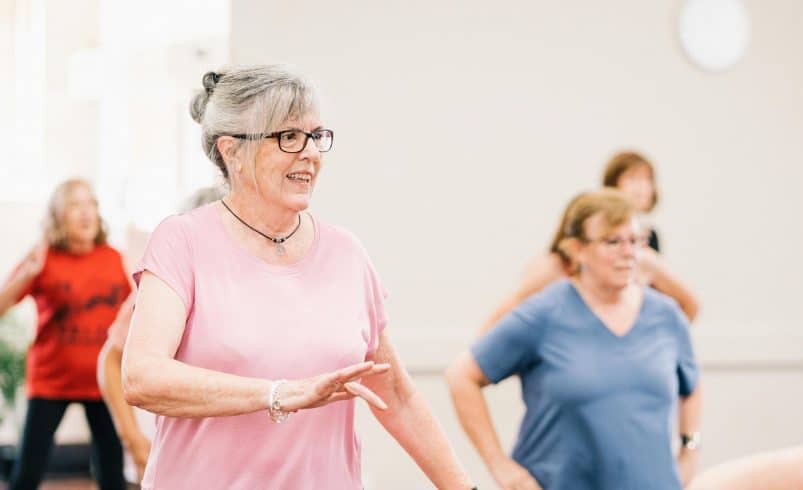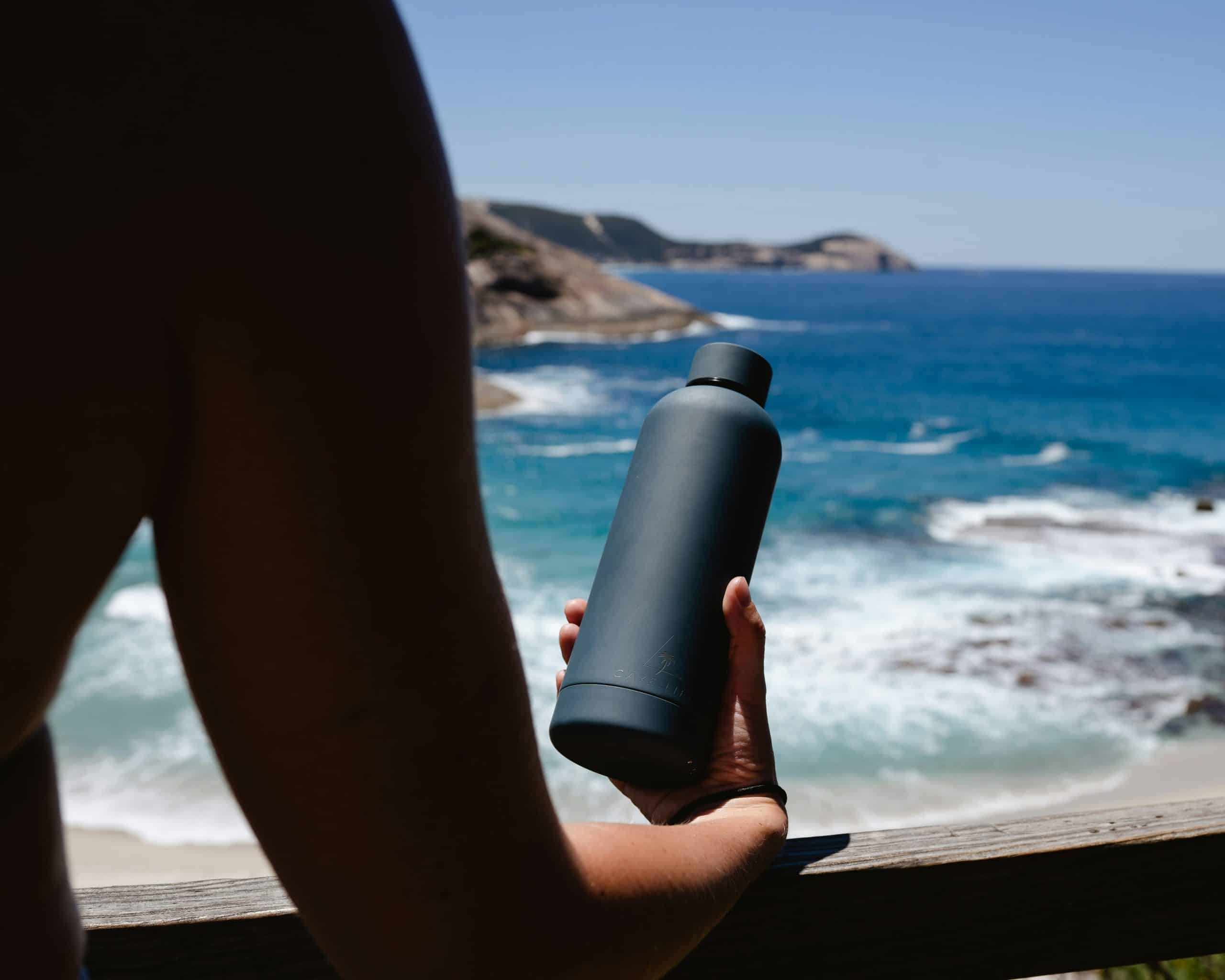According to the National Council on Aging, adults who stay physically active in their 70s and beyond experience 30% lower rates of functional decline compared to their sedentary peers. I’ve spent decades working with seniors who prove that fitness isn’t just for the young—it’s a lifelong journey that simply requires adaptation as we age. The key isn’t giving up on exercise after 70; it’s finding the right balance between staying active and respecting your body’s changing needs. Whether you’re currently active or looking to begin a fitness routine in your golden years, this guide will help you maintain strength, flexibility, and energy without pushing yourself too hard.
Understanding Age-Related Changes in Fitness
The human body undergoes significant transformations after age 70, requiring thoughtful adaptations to fitness routines. Sarcopenia, the natural decline in muscle mass, affects approximately 10-15% of adults starting in their 70s. This loss accelerates at a rate of 3-5% per decade after age 30, but increases dramatically after 70, potentially reducing strength by 20-40%. The practical implications are substantial – diminished strength affects everything from carrying groceries to maintaining posture.
Bone density changes present another critical challenge. By age 70, many adults have lost 20-30% of their peak bone mass, increasing fracture risk significantly. These skeletal changes necessitate careful exercise selection, avoiding high-impact movements that once posed little risk. Joint cartilage also thins and becomes less resilient, making shock absorption less efficient and increasing vulnerability to exercise-related injuries.
Cardiovascular capacity undergoes substantial changes after 70. Maximum heart rate decreases by approximately one beat per year after age 20, while stroke volume (blood pumped per heartbeat) and cardiac output decline steadily. These factors combine to reduce VO2 max—the body’s ability to utilize oxygen during exercise—by approximately 1% annually after age 50. Recovery periods necessarily lengthen, often requiring 48-72 hours between vigorous sessions compared to the 24-36 hours needed by younger adults.
Balance and coordination emerge as critically important fitness components after 70. The vestibular system in the inner ear degrades with age, proprioception (position sense) becomes less acute, and neural pathways transmit signals more slowly. These changes explain why one-third of adults over 65 fall annually, with falls representing the leading cause of injury-related death in this age group. Regular balance training becomes not merely beneficial but essential.
Metabolic shifts fundamentally alter energy availability during exercise for older adults. Basal metabolic rate typically decreases 1-2% per decade after age 20, accelerating after 70. This reduction, combined with changes in glucose metabolism and mitochondrial efficiency, affects energy reserves during physical activity. The practical consequence is that exercise intensity and duration must be adjusted accordingly, with more emphasis on efficiency and strategic energy management.
Safe and Effective Exercise Options for Seniors
Water-based exercises represent an ideal option for adults over 70. The natural buoyancy of water reduces weight-bearing stress on joints by approximately 90% when submerged to neck level, while providing 12-14 times more resistance than air. Aquatic workouts effectively build strength and cardiovascular fitness without the impact risks of land-based activities. Research published in the Journal of Aging and Physical Activity demonstrates that regular water exercise improves functional fitness measures in seniors by 30-40% within 12 weeks.
Chair-based strength training offers remarkable benefits while prioritizing stability. These exercises utilize body weight, light dumbbells, or resistance bands while seated, eliminating fall risks. Studies show that twice-weekly chair exercises increase lower body strength by 20-30% in adults over 70 within three months. Essential movements include seated leg extensions, bicep curls, overhead presses, and seated marches, focusing on controlled motion rather than speed or weight.
Walking represents perhaps the most accessible and effective cardiovascular exercise for seniors. A regular walking program improves aerobic capacity, lowers blood pressure, reduces arthritis pain, and enhances cognitive function. For maximum benefit, seniors should aim for 30-minute sessions at least five days weekly, at a pace allowing conversation without breathlessness. Terrain selection matters significantly—smooth, even surfaces reduce fall risk while providing sufficient cardiovascular challenge.
Gentle yoga and tai chi practices deliver remarkable benefits for balance, flexibility, and stress management. These ancient movement systems emphasize controlled breathing, mindful movement, and postural awareness. Research from Harvard Medical School found that tai chi practitioners over 70 experienced 47% fewer falls than their inactive peers. Similarly, seniors practicing yoga twice weekly show significant improvements in balance measures, with the additional benefits of reduced anxiety and improved sleep quality.
Resistance band workouts provide appropriate progressive challenge without the injury risks associated with free weights. These color-coded elastic bands allow for precise resistance control while engaging stabilizing muscles. Resistance band training improves muscle mass and strength while being gentle on joints. A 2019 study in the International Journal of Exercise Science found that adults over 70 who performed band exercises three times weekly for 12 weeks increased their overall strength by 18% and improved functional movement patterns significantly.
Creating a Balanced Weekly Routine
The ideal exercise frequency for adults over 70 balances activity with adequate recovery. The American College of Sports Medicine recommends 150 minutes of moderate-intensity aerobic activity weekly, distributed over at least three days, with no more than two consecutive days of inactivity. Strength training should occur 2-3 times weekly, with at least 48 hours between sessions targeting the same muscle groups. Research published in JAMA Internal Medicine found that older adults who adhere to these guidelines reduced mortality risk by 22% compared to sedentary peers.
Alternating between different types of exercise creates a comprehensive fitness profile. This approach targets all physical systems while preventing overuse injuries. An effective weekly structure might include cardiovascular work on Monday, Wednesday, and Friday; strength training on Tuesday and Thursday; and balance/flexibility sessions daily. This pattern ensures each fitness component receives attention while allowing appropriate recovery between similar activities.
Sample schedules vary based on fitness levels. Beginners might start with:
- Monday: 10-minute walk, 5 minutes of chair exercises
- Tuesday: 10 minutes of gentle yoga, focusing on balance
- Wednesday: 10-minute water walking
- Thursday: Rest day with light stretching
- Friday: Repeat Monday’s routine
- Saturday: 10 minutes of tai chi
- Sunday: Complete rest
Intermediate seniors could follow:
- Monday: 20-minute moderate walk, 15 minutes of resistance band work
- Tuesday: 30 minutes of water aerobics
- Wednesday: 20-minute walk, 15 minutes of chair strength exercises
- Thursday: 30 minutes of gentle yoga
- Friday: 20-minute walk, 15 minutes of resistance band work
- Saturday: 30 minutes of recreational activity (gardening, dancing)
- Sunday: Rest day with light stretching
Advanced seniors might engage in:
- Monday: 30-minute brisk walk, 20 minutes of resistance training
- Tuesday: 45 minutes of water aerobics
- Wednesday: 30-minute walk, 20 minutes of strength work
- Thursday: 45 minutes of yoga or tai chi
- Friday: 30-minute walk, 20 minutes of resistance training
- Saturday: 45 minutes of recreational activity
- Sunday: Active recovery with gentle movement
Rest days perform vital functions in senior fitness programs. These periods allow muscle tissue repair, joint recovery, and nervous system restoration. Complete rest days should involve relaxing activities that promote circulation without physical stress. Additionally, many seniors benefit from “active recovery” days featuring gentle movement that enhances healing without taxing the body.
Several warning signs indicate the need for routine modifications. Persistent fatigue lasting more than two hours post-exercise suggests excessive intensity. Joint pain lasting beyond 24 hours after activity indicates potential inflammation requiring adjustment. Disrupted sleep patterns, decreased enthusiasm for physical activity, or unusual shortness of breath all warrant immediate program modification and possibly medical consultation.
Listening to Your Body: Recognizing Your Limits
Differentiating between productive discomfort and warning pain becomes increasingly important after age 70. Productive discomfort presents as a mild burning sensation in muscles during activity, dissipating shortly after exercise ceases. Warning pain feels sharp, occurs in joints rather than muscles, and often persists well after exercise. The former indicates effective conditioning, while the latter signals potential injury. A useful guideline: discomfort that disappears within 30 minutes of rest is generally safe; pain lasting longer requires modification and possibly medical attention.
The “talk test” provides a simple yet effective method for monitoring exercise intensity. During moderate activity, seniors should be able to carry on a conversation with occasional pauses for breath. If speaking becomes difficult or requires frequent breaks, the intensity exceeds appropriate levels. This self-assessment tool helps maintain exercise within the aerobic zone, which research indicates offers optimal cardiovascular benefits for older adults while minimizing injury risk.
Physical warning signs frequently manifest during excessive exertion. Unusual shortness of breath, dizziness, cold sweats, or chest discomfort require immediate cessation of activity and potential medical attention. More subtle indicators include facial flushing beyond normal exercise response, irregular heartbeat sensations, or joint swelling after activity. Each signals that the current exercise parameters exceed physiological capacity.
Mental and emotional indicators often precede physical symptoms of overtraining. Increased irritability, sleep disturbances, decreased motivation, and persistent mental fatigue all suggest excessive training stress. Research from the International Journal of Sports Medicine indicates that psychological markers detect overtraining in older adults 7-10 days before physical symptoms appear. Seniors should monitor mood and mental energy as accurately as physical capacity.
Medical consultation becomes necessary when exercise routines consistently produce concerning symptoms. These include chest pain or pressure during activity, severe joint pain, persistent dizziness, significant swelling, or extreme fatigue lasting more than 24 hours post-exercise. Additionally, any new medication should prompt consultation about potential exercise interactions. Physicians can provide individualized guidance on safe exercise parameters based on specific health conditions.
Nutrition to Support Senior Fitness
Protein requirements increase significantly for physically active seniors. While the RDA suggests 0.8g per kilogram of body weight daily for adults, active seniors benefit from 1.2-1.5g per kilogram to maintain muscle mass and support recovery. A 70kg (154lb) active senior should consume 84-105g of protein daily, distributed across meals. Quality protein sources like lean meats, fish, legumes, and dairy products provide essential amino acids that support muscle preservation and immune function.
Hydration strategies require special attention after age 70. Thirst perception diminishes with age, while kidney function decreases by approximately 30% between ages 30 and 80. These changes increase dehydration risk substantially. Active seniors should consume 8-10 ounces of fluid 30 minutes before exercise, 3-4 ounces every 15-20 minutes during activity, and 16 ounces afterward. Clear urine indicates proper hydration, while dark yellow suggests insufficient fluid intake.
Anti-inflammatory foods significantly support joint health and recovery. Omega-3 fatty acids found in fatty fish, flaxseeds, and walnuts reduce inflammatory markers by 15-20% according to research from the American Journal of Clinical Nutrition. Colorful fruits and vegetables containing flavonoids and antioxidants—particularly berries, cherries, and leafy greens—reduce oxidative stress associated with exercise. Including these foods daily helps mitigate joint discomfort and accelerates recovery between sessions.
Strategic meal timing enhances workout performance for seniors. A small carbohydrate-protein combination 1-2 hours before exercise improves energy availability and exercise quality. Examples include yogurt with fruit, whole-grain toast with nut butter, or oatmeal with berries. Post-exercise nutrition within 45 minutes of activity supports recovery, with an optimal 3:1 carbohydrate-to-protein ratio. This window represents when muscle tissue most effectively utilizes nutrients for repair and adaptation.
Certain supplements may benefit active seniors under medical supervision. Vitamin D3 supports bone health, immune function, and muscle performance, with 1,000-2,000 IU daily often recommended for seniors. Calcium at 1,200mg daily promotes bone density maintenance. Fish oil containing EPA/DHA (1-2g daily) reduces exercise-induced inflammation. Magnesium (300-400mg daily) supports muscle function and recovery. Importantly, all supplements should be discussed with healthcare providers to ensure appropriateness and avoid medication interactions.
Recovery Strategies for Older Adults
Recovery periods naturally lengthen with age due to physiological changes. After 70, muscle protein synthesis rates decrease by 30-40% compared to younger adults, while tissue repair processes require 48-72 hours for completion versus 24-36 hours in middle age. This extended timeline necessitates deliberate recovery strategies. Research demonstrates that seniors who incorporate structured recovery techniques experience 25-30% fewer exercise-related injuries while maintaining consistent progress.
Gentle stretching routines significantly enhance flexibility and reduce post-exercise soreness. Static stretches held for 30-60 seconds when muscles are warm improve range of motion while facilitating removal of metabolic waste products. A comprehensive routine addressing major muscle groups requires only 10-15 minutes daily. Focus particularly on hip flexors, hamstrings, chest, and shoulder muscles, which commonly tighten with age and sedentary periods. Regular stretching improves movement efficiency and reduces injury risk substantially.
Quality sleep becomes increasingly important for physical recovery after 70. During deep sleep, growth hormone production peaks, facilitating tissue repair and immune function. However, sleep architecture changes with age, with less time spent in restorative deep sleep stages. Strategies to enhance sleep quality include maintaining consistent sleep-wake schedules, creating a cool dark sleeping environment, limiting screen exposure before bedtime, and avoiding caffeine after mid-afternoon. These approaches can improve recovery sleep efficiency by 15-20%.
Heat and cold therapy applications effectively manage joint discomfort for active seniors. Heat application for 15-20 minutes before activity increases blood flow, enhances tissue elasticity, and reduces stiffness. Cold therapy for 10-15 minutes after exercise reduces inflammation and numbs pain signals. Many seniors benefit from alternating treatments, particularly for chronic conditions like arthritis. These simple interventions reduce discomfort while supporting continued activity.
Stress management techniques significantly enhance physical recovery by reducing cortisol levels that otherwise impair repair processes. Mindfulness meditation practiced 10-15 minutes daily reduces stress hormones by approximately 20% according to research in Brain, Behavior, and Immunity. Progressive muscle relaxation, diaphragmatic breathing, and nature exposure similarly reduce physiological stress markers. These approaches complement physical recovery methods, creating comprehensive restoration between exercise sessions.
Staying Motivated and Consistent
Setting realistic fitness goals specific to your seventies requires understanding both possibilities and limitations. Effective goals focus on functional improvements rather than cosmetic changes or performance metrics appropriate for younger adults. Measurable objectives might include walking distance, chair rise repetitions, balance duration, or activities of daily living performed independently. Research shows that seniors who establish specific, measurable goals increase adherence by 65% compared to those with vague intentions.
Finding workout partners or groups creates powerful social reinforcement for exercise habits. Seniors with exercise companions attend 78% more sessions than those exercising alone, according to studies in the Journal of Aging and Physical Activity. Group settings provide accountability, encouragement, and social connection that transforms exercise from obligation to enjoyable social activity. Community centers, senior organizations, and fitness facilities frequently offer age-appropriate group programs specifically designed for adults over 70.
Tracking progress appropriately requires metrics beyond weight or appearance. Useful parameters include energy levels throughout the day, sleep quality, mood stability, ability to perform daily tasks, and reduction in pain or discomfort. Distance walked without fatigue, stairs climbed without assistance, or improved confidence in movement represent meaningful functional improvements. Simple journals documenting these aspects provide tangible evidence of progress while reinforcing motivation.
Seasonal adjustments ensure year-round safety and consistency. Summer exercise may require earlier scheduling to avoid heat, increased hydration, and lighter clothing. Winter adaptations include proper layering, footwear with adequate traction, and potentially moving activities indoors. Fall and spring present ideal outdoor exercise opportunities but may require allergy considerations for some seniors. These thoughtful adjustments maintain program continuity throughout the year, preventing the fitness losses that occur with extended interruptions.
Restarting after illness or extended breaks demands patience and strategic progression. Begin with approximately 50% of previous duration and intensity, then increase by 10-15% weekly if no adverse effects occur. This conservative approach prevents the injuries commonly associated with resuming former activity levels too quickly. Medical clearance becomes particularly important after significant health events. Remember that fitness returns more quickly than it developed initially—most seniors recover previous fitness levels within 4-8 weeks of consistent, appropriate activity.
Your Lifelong Fitness Journey
Age is truly just a number when it comes to staying active. The practices outlined in this guide can help you maintain independence, reduce fall risk, and enjoy a higher quality of life well into your eighties and beyond. Remember that consistency trumps intensity at this stage of life—even modest, regular movement yields tremendous benefits for both body and mind. By honoring your body’s signals, working with healthcare providers, and focusing on activities you genuinely enjoy, you’ll develop a sustainable approach to fitness that enhances your golden years rather than depleting them. Your seventies can be a time of vitality and strength when you approach fitness with wisdom and self-compassion.












